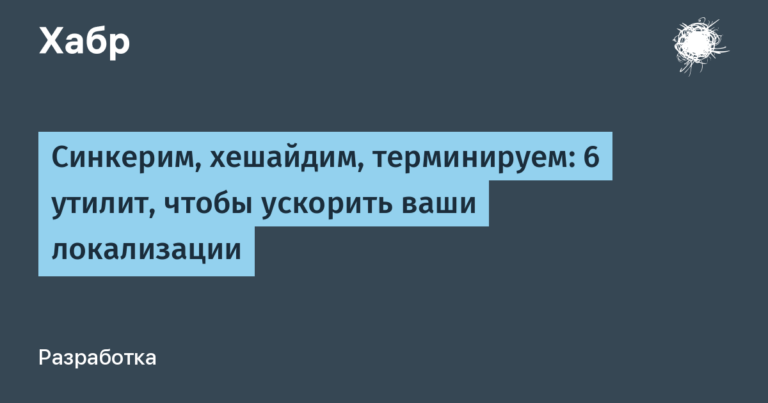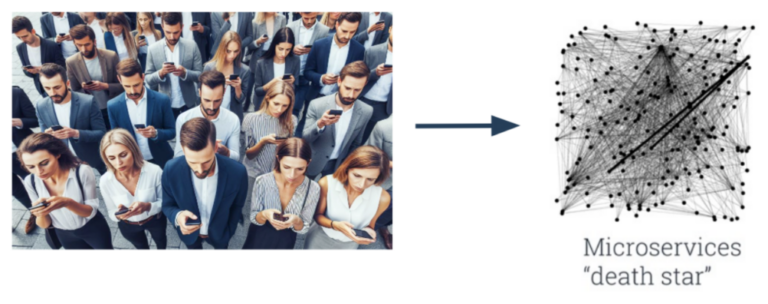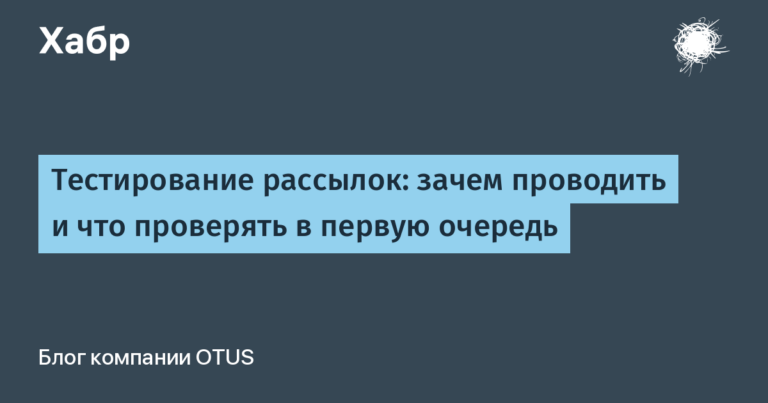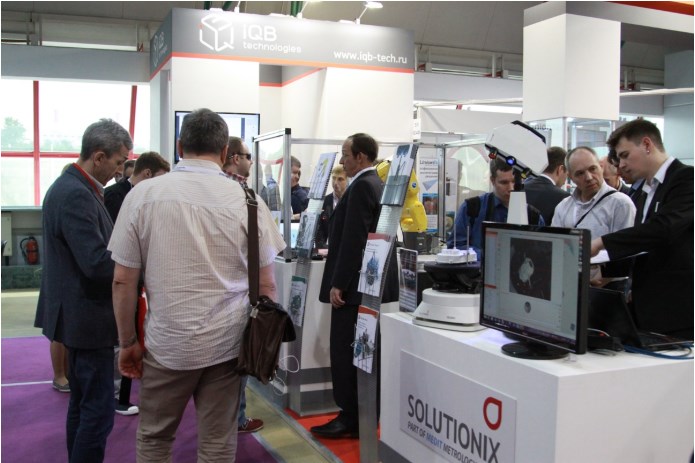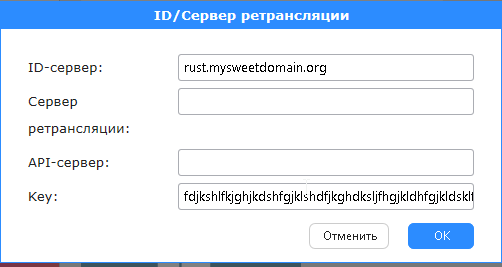One year after the workshop. How is my career
To be honest, no special in my LinkedIn account no – I did everything as recommended on the Practicum career track. And there I did not directly contact anyone – the HRs themselves came to me with a vacancy.
After leaving innoscripta, my page was overgrown with recommendations from former colleagues, and I have already started looking for the next position there – I bought Premium and actively respond to vacancies. Of course, I keep statistics again: I wonder how it will turn out this time.
Study and preparation
I will say openly: I have never prepared specifically for an interview. I don’t really understand how to do this if you don’t know what questions they will ask – and this happens most often. Therefore, I just continued and continue to study according to the same system that I developed in the Practicum.
The system is something like this: I save all the topics and materials that interest me and I want to go through them, and sequentially go through them. If I think that the material must be read, I put it in the ToDo manager. If I want to read, but I’m ready to postpone it for an indefinite time, I throw it into the telegram saves.
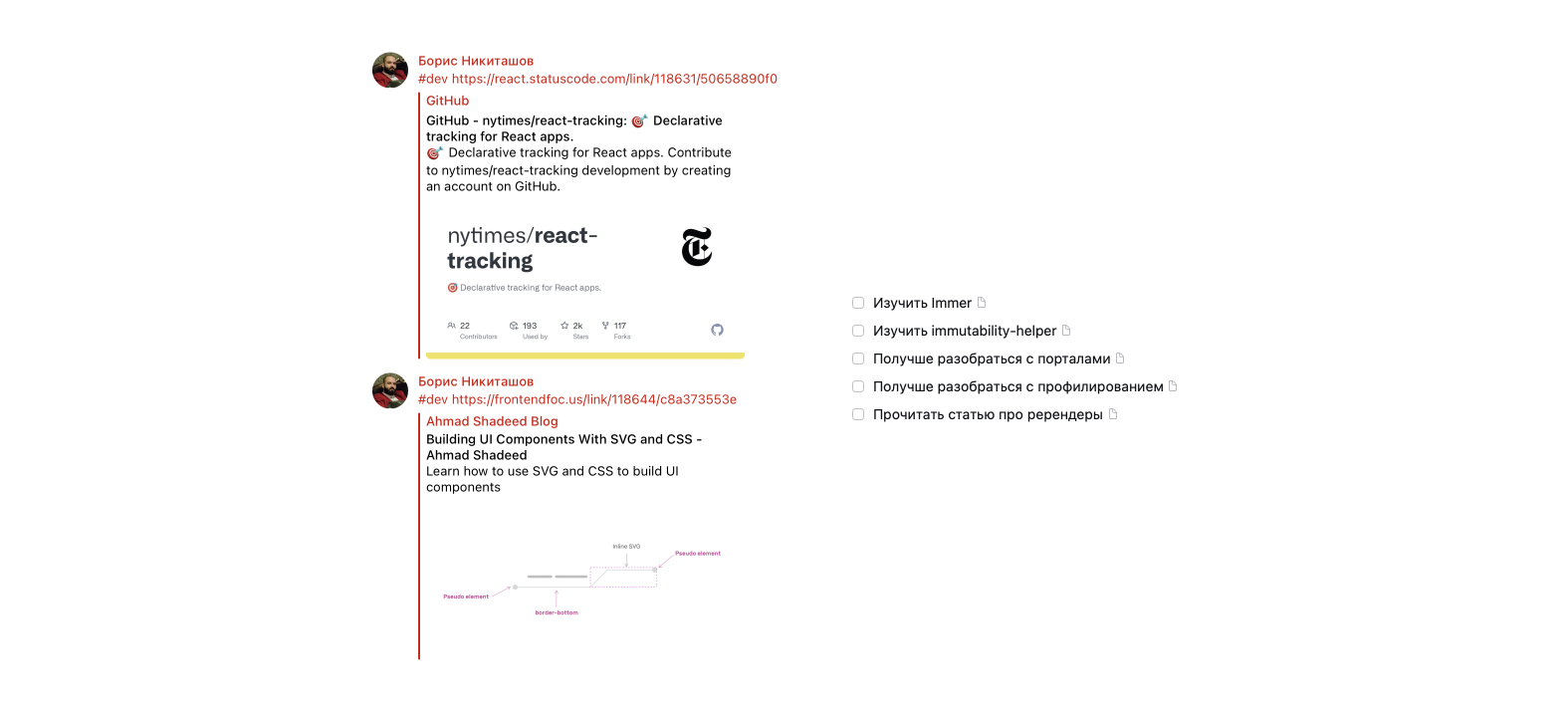
In addition, there are more systematic sources – courses and books. Right now I’m reading a book about Git – I want to understand it in more detail. And I’m still going through PHP mini-course at CodeCademy for general education (yes, I know I could be tinkering with Python instead, but what can you do for me?).
A lot of useful experience comes from the practice of building pet projects – I’m just finishing the backend for the first one, which I want to fully release.
At the end of this list are workouts at sites like Code Wars and LeetCode — but to be honest, they almost never have enough time.
First job – La Redoute
I received the first money for the code in June 2021 from La Redoute, an online store for clothes, shoes and all sorts of things for the home. As mentioned, I came across them on twitter.
I have been using Twitter for a long time and actively – for 12 years, at least. It so happened that there is a very active IT community. At some point, I saw how a La Redoute employee offers urgent layout orders – and immediately responded to this offer.
The story developed for a long time: at first I was offered a simple test task, I completed it, and another candidate was preferred to me. It happens – I politely said goodbye and said that you can write to me if something happens. A couple of months later, they really wrote to me, because another candidate fell off.
I completed a number of orders, after which the girl who was the main layout designer left the company – as I later found out, not just anywhere, but even to the “Evil Martians”! And, in fact, I became the main layout designer. It was not a full-time job in the classical sense: I still completed orders, which could be a lot, or not at all.
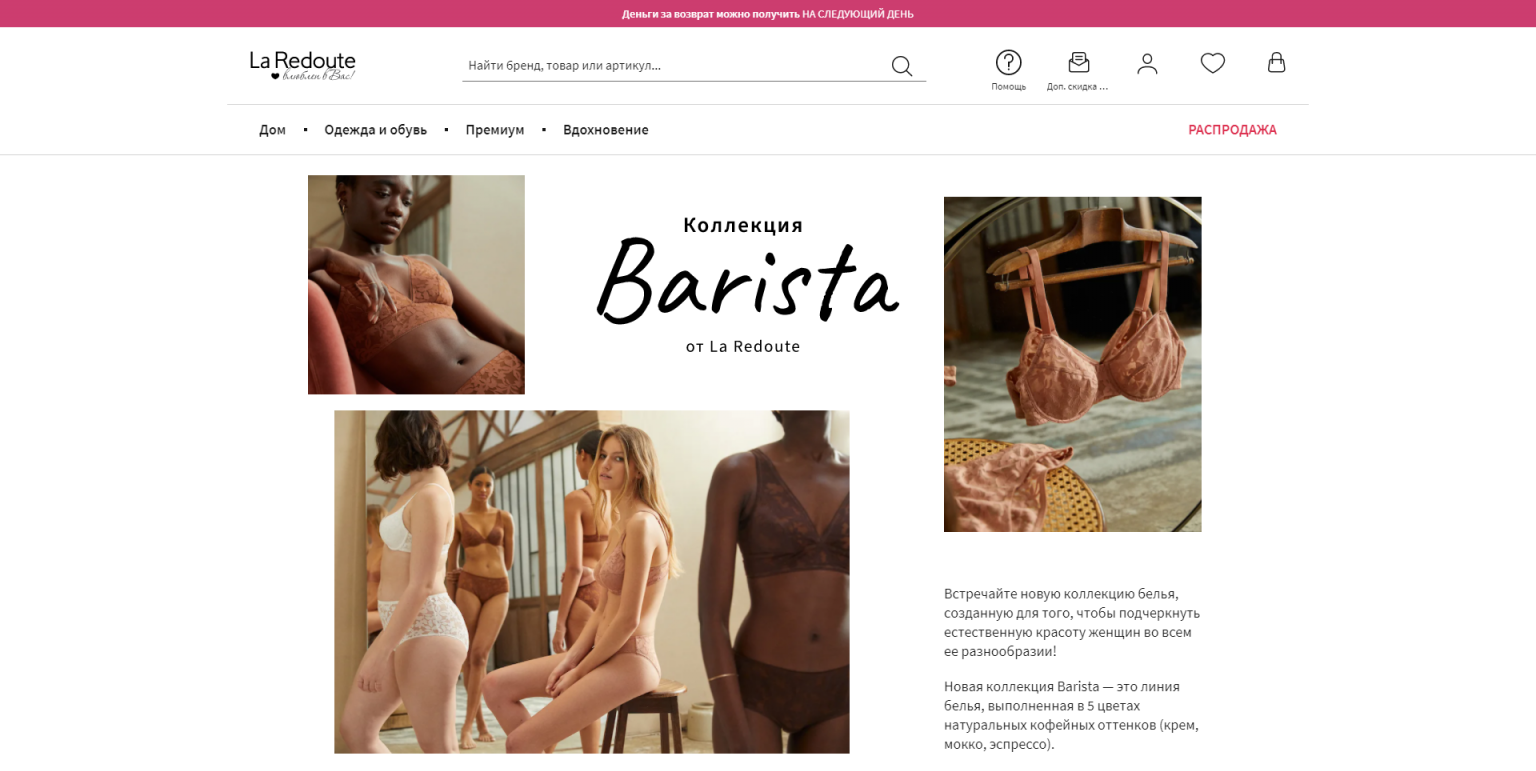
The experience I got at La Redoute proved to be very useful, despite the rather conservative stack and emphasis on layout. For the first time, I participated in combat, commercial tasks, and also earned a line in my resume, which instantly increased the number of views on it. And I wouldn’t have gotten my next job without it.
As a result, I worked at La Redoute for five months – I left at the moment when they gave me an offer from innoscripta. As expected, I warned my supervisor in advance and helped to find a replacement in a timely manner. A replacement was quickly found in the Workshop.
We maintained excellent relations with the former leader: we met regularly and drank when we found ourselves in the same city in Russia, and now, by the will of fate, we ended up together in Istanbul. It so happened that he left La Redoute almost at the same time as me. Hi Artem! 🙂
Second job – innoscripta
History since innoscripta was largely unexpected. The job was sent to me on LinkedIn on September 3, my birthday. And since I was actively celebrating, I did not answer until two days later.
The company helps scientists from Germany to receive grants from the German government for innovative developments or is looking for companies that are ready to invest in them. We, as an IT department, provided the entire information infrastructure for this – from databases of potential investors to a special system for interacting with scientific projects.
The vacancy was for the position of a front-end developer at the middle/senior level. Usually I didn’t respond to such people at all, because I obviously assumed that I wouldn’t pull it out. But then my attention was drawn to the stack – it exactly coincided with mine, nothing more. So I decided to try it anyway, but not really counting on success.
First, HR manager Anya contacted me – she told me for a long time and in great detail about the company and internal projects. By the end of this conversation, I already knew almost everything! This helped a lot: when you immediately hear what’s what, it’s much easier to roll in at the beginning.
And then three stages of entrance examinations began.
The first step was a test. The vacancy had a lot of emphasis on React, and for some reason I decided that the test would also focus on it. I re-read all the documentation for the library, but it turned out that questions about it took up 20% of all tasks at most. There were a lot of tricky things about JS itself and about programming in general. I remember how I looked in horror at the question about bitwise operators – this is not a June topic at all. The test was in English, the text of the tasks was copy-protected, and the response time was limited.
I was very happy when, a couple of days later, Anya informed me that I had passed the test. According to her, I scored 130 points out of 220 possible, and the passing was 100.
The second step seemed much easier to me. It had open-ended questions on business logic in the spirit of “what would you suggest we do if we have such and such a problem.” I did not suffer over them for a long time – I answered everything as I really thought. There was no scoring at this stage, but I was told that I had “good motivation”.
Finally, the third stage is live coding. I was promised that it would be the most difficult. In addition, for me it was the first experience. Like the first two stages, live coding was supposed to be entirely in English. I didn’t specially prepare for it – you can’t guess here. So at the appointed hour, I just sat down at my laptop, popped five shots of tequila, and prepared to embarrass myself.
I got a Russian-speaking interviewer – an experienced developer with impressive experience. We actually had some part of the conversation in English. My interlocutor made sure that I could participate in international calls without significant interference, and then I set to work.
I had to choose one task out of two offered. In the first one, it was required to write a simple ToDo manager, but to use the algorithms correctly in the work. The second is to write a React application with a form that will request data from the Metropolitan Museum via API and display them according to the user’s request. It was not necessary to be in time in an hour – it was possible to start on a phone call, and then send the finished version.
The choice was simple: I’m not very well versed in algorithms yet (although I’m going to pull it up), but working with the API is easy for me. The second task was generally very similar to what I had already done many times – both while studying at the Practicum, and in educational projects for NGOs, and in my own endeavors. So I took the second option.
Although a little inconsistent, I managed to solve the problem even in less than an hour – the last 10-15 minutes the interviewer and I were already talking on free topics.
It only remained to quickly call the director of the St. Petersburg office and pass what we half-jokingly called the “adequacy test” – fortunately, I also passed it.
As a result, I received good reviews, and a few days later my candidacy was approved in Munich. Anya sent me a beautiful offer in PDF format 🙂
I decided to go to work next Monday – it fell on October 18th. It was not only my first full-time job as a developer, but also my first ever office job. Initially, I was fundamentally looking for remote work, but the positive image of the company that I had and the numbers above the market ones in the offer convinced me to try.

In addition, the company operated something like a hybrid mode: at least once a week, many worked at home, and someone even gradually switched to full remote work. I did not do this: I liked the team, the comfortable environment and the regular change of scenery.
I really liked the approach with which I was met in the company. On the first day, I went through onboarding, set up a working environment, got acquainted with colleagues and company products. In the second, I was already given some simple task, like the notorious repainting of a button. Further, every day the tasks became more and more difficult, and I constantly felt progress. The dive turned out to be perfectly measured.
During my time at innoscripta, I managed to work with all the main products of the company, except for purely back-end ones, and visited two product teams. Most of the time I’ve been working on a tool called Clusterix, which is a web interface for a database of businesses that may be interested in investing in the projects of the company’s clients.
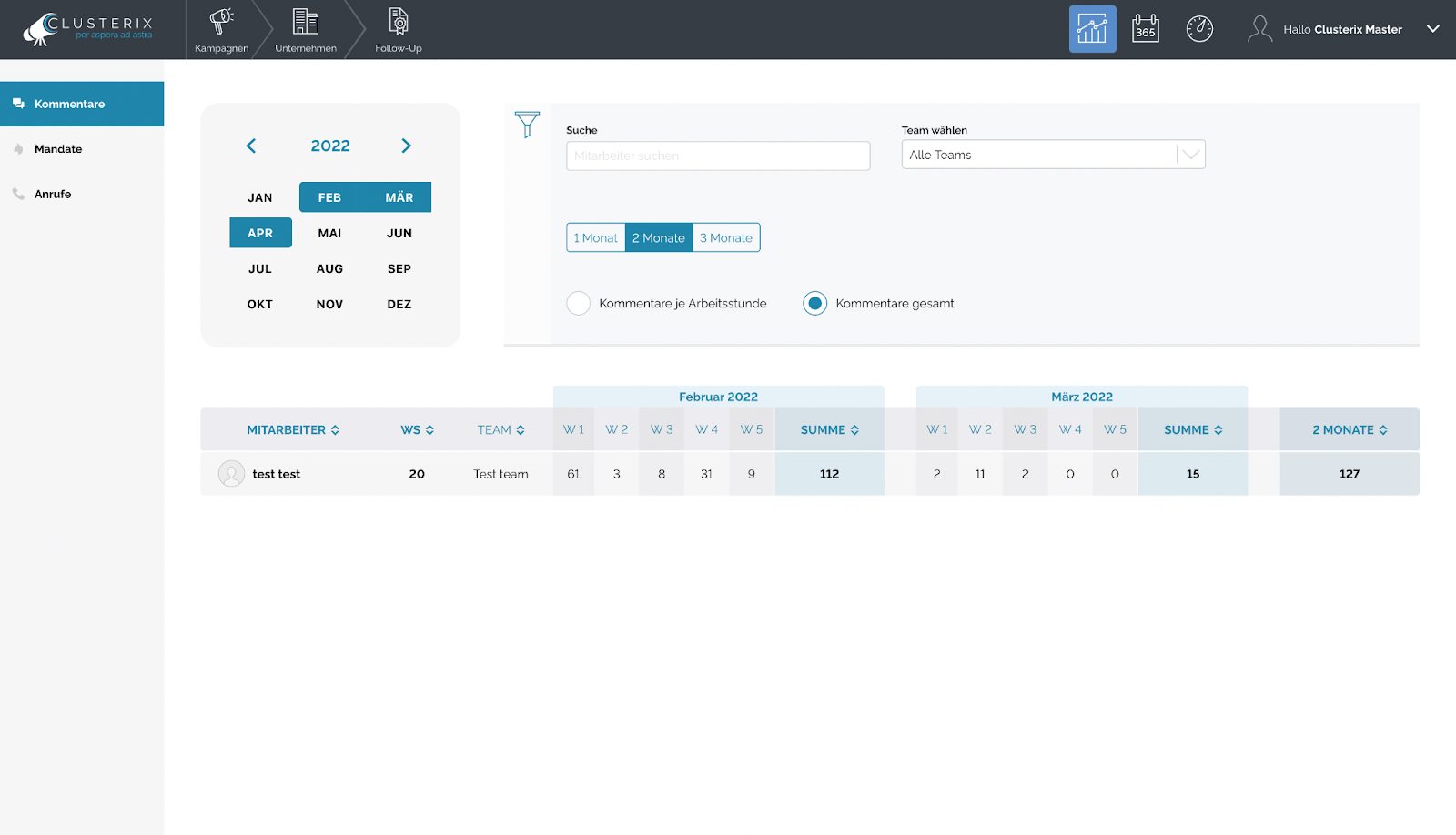
The constant increase in the complexity of the tasks gave a sense of continuous growth. Every day I understood the technologies already studied more deeply, and I managed to master some from scratch already at work – for example, Redux and its ecosystem.
Results: my future plans and advice to those who are looking for a job
In April 2022, my wife and I left Russia and moved to Istanbul – from here I worked remotely for innoscripta for some time, and now it’s time to move on.
Now I am looking for work mainly in European companies, but I also look at Turkish and Russian ones. I won’t say that the search is going much easier than the very first time – both the market and my criteria have changed. It is very interesting where to work next.
I try to consistently improve the level of my competencies. In connection with the move, I had to take a short break in my studies, but now that everyday issues have been resolved in general, I am slowly returning to the mode.
In addition to the front-end, I am also interested in the back-end, but now I plan to concentrate on my main specialization. I am also thinking about taking another course of the Practicum. Initially, I thought about a course on React, but it no longer makes sense – I mastered most of its material in practice. So I’m looking at coursesMiddle Frontend developer” and “Algorithms“They are more interesting to me.
Top tip for job seekers: earn a line or two on your resume. It can be a small part-time job, an interesting pet project, a free site for friends or a charity project for an NGO (you can fit into these in the Practicum) – in any case, this will significantly increase the attention of recruiters to your candidacy.
Second tip: search calmly and measuredly. You should not agree to the first offer that comes across – go where you really will be interested and comfortable. Such an option is not immediately, but for sure there will be.
Third tip: be prepared for the fact that the search will be delayed. Yes, many people find their first job quickly, but for someone it may take, for example, a year. Don’t miss out on opportunities, but it’s worth getting ready for the long run.
